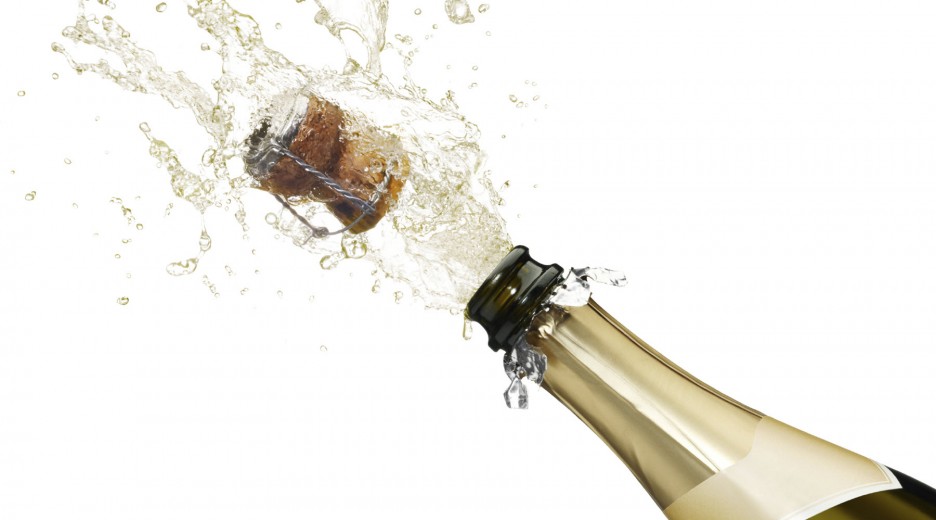Gents, there’s more to Champagne than just popping bottles. New Year’s Eve is creeping up on us; this means your going to be springing for a bottle or two. Before you empty out your wallet for a quality bottle of champagne here’s what you need to know about Champagne and its selection.
Is it really Champagne?
Let’s get one thing clear: Champagne is wine and it can only hold its title if it comes from the Champagne region of France. It is prepared under the “méthode champenoise,” a labor-intensive and costly process where the wine undergoes a secondary fermentation inside the bottle, creating bubbles. Fear not, sparkling wine from other regions throughout the world can be prepared in the same manner. There are tasty alternatives, such as Italian prosecco and Spanish cava.
Discovering the Taste
By looking at the label and searching for one of these key terms, you’ll have a better idea of what the product will ultimately taste like.
- Doux: The sweetest type of Champagne you’ll find.
- Demi-Sec: A sweet Champagne that’s not as cloying as typical dessert wine, hence the name “half sweet.”
- Dry: Champagne that’s not as sweet as a demi-sec.
- Extra Dry: A Champagne that is a step dryer.
- Brut (pronounced broot): The driest Champagne you can find and the most popular as it can be paired with a variety of dishes.
Fruits of One’s Labor
Look for one of these key terms to find out which grapes produced the sparkling wine. This will also help you determine which meals you should pair your drink with:
- Blanc de Blancs (white of whites): A Champagne made with chardonnay grapes. This delicate variation is best served with light foods, such as seafood and soup.
- Blanc de Noirs (white of darks): A Champagne made with pinot noir and pinot meunier grapes. It features a deeper, golden yellow hue and is usually paired with full-flavored foods, such as meat and cheese.
- Rosé: Pink-hued Champagne that gets its coloring from either the skins of dark grapes or adding a little red wine to white wine during the fermentation process. Rosé compliments richer dishes, such as duck or chocolate.
The Bubbles
When it comes to Champagne bigger isn’t better. One study reveals smaller bubbles means better Champagne because it releases a stronger intensity of flavor and aroma. Bigger bubbles, on the other hand, could indicate that the wine was produced poorly and its notes won’t be as prominent or lasting. California-based restaurateur Antonio Cagnolo agrees. He says,
“One easy way to tell a fine Champagne is by looking at the size of the bubbles, the tinier the bubbles, the finer the champagne.”
The House
“As a consumer you can select between the big houses, such as Tattinger, Perrier-Jouët, or Moët & Chandon that purchase most, if not all, their grapes and run major international businesses,” explains wine educator Jim Laughren. “There are also small farmers and producers who use only grapes from their own family-owned vineyards, operate on a much smaller scale, and generally charge less than the heavyweight houses. These ‘grower’ Champagnes can be identified by a very small ‘RM’ somewhere on the front label.” If you really want to wow your guests, consider skipping on the more notable brands and instead, explore other lesser-known houses that produce quality wine that meets your taste preference.
Save or Splurge?
High quality Champagne, like Dom Pérignon, Cristal, or Armand de Brignac comes with a glaring price tag, but getting more bang for your buck doesn’t have to necessarily mean going broke. “If you want great Champagne at a great price, look for ones labeled ‘NV’ or non-vintage,” suggests sommelier Maximillian Kast.
“This really means they come from multiple vintages and represent the ‘house style,’ trying to create a consistent wine year in and out.” It’s also more affordable than vintage Champagne, which means the wine was made from the grapes produced from a single harvest of a specific year.
Make Friends
Champagne is meant to be savored slowly for full enjoyment. To discover one that meets your needs completely, visit a wine shop and become friendly with the owner. “A fine staff is there to offer personal service and will get to know your likes and preferences,” says Beth von Benz wine curator at Whiskey & Wine Off 69. “The better they know you, the better their recommendations will be.”
Follow ‘LLERO on Facebook, X and Instagram.

